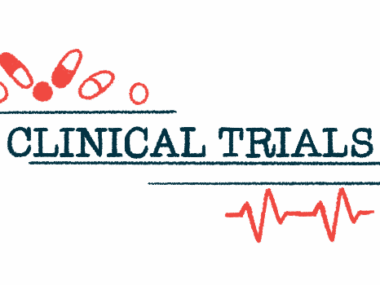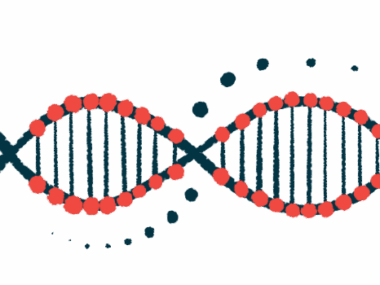2 of 3 ovarian cancer patients in study respond to SON-1010 combo
Testing of immunotherapy plus atezolizumab expanded, adding higher doses
Written by |

Sonnet Biotherapeutics is now testing its immunotherapy SON-1010, in combination with the immune checkpoint inhibitor Tecentriq (atezolizumab), in more patients — and soon, at a higher dose — as a treatment for people with platinum-resistant ovarian cancer (PROC).
The company announced that it has expanded its clinical evaluation of the combo treatment, with enrollment now completed in the highest SON-1010 dose group participating in the Phase 1b/2a (NCT05756907) study, dubbed SB221. A readout on preliminary efficacy data is expected later this year, Sonnet said in a company press release.
So far, according to the developer, 2 of 3 PROC patients had a significant tumor response — meaning their tumors shrank — to the combination therapy at the two-month timepoint.
Moreover, the trial’s Safety Review Committee has recommended adding an even higher maintenance dose group to the study to assess longer-term safety and tumor responses.
“We are very pleased with the progress of the SB221 study and look forward to investigating the effect of a higher dose of SON-1010, with the hope that it could maximize efficacy without inducing … toxicity,” said Richard Kenney, MD, Sonnet’s chief medical officer, who added that preliminary results are expected before the end of the year.
Ovarian cancer is one of the most common types of gynecological cancer, most of which arise from epithelial cells that form the outer layer of the ovary.
Standard treatment involves neoadjuvant/adjuvant chemotherapy (N/ACT) — chemotherapy given before and after surgery to remove as much of the cancer as possible. However, a recurrence of advanced ovarian cancer is common, and the outcomes are poor.
Robert Wenham, MD, the study’s lead investigator and chair of GYN oncology at Moffitt Cancer Center in Florida, noted that “PROC patients typically have low response rates to currently approved therapies.”
SON-1010 being tested with immune checkpoint inhibitors like Tecentriq
SON-1010, administered subcutaneously or under the skin, is a candidate therapy composed of two linked parts: an immune signaling protein called IL-12 and an antibody fragment that binds the protein albumin. That extends the life of the therapy.
The antibody fragment was selected to bind albumin at both body pH and the acidic pH typically found in the tumor microenvironment.
IL-12 helps the body make more interferons, or IFNs, which are a group of proteins that boost the immune system and help it find and attack cancer cells.
According to Sonnet, SON-1010 may work best when used with drugs called immune checkpoint inhibitors (ICIs), like Tecentriq, which are already approved to treat some cancers. ICIs work by blocking a protein called PD-L1 on cancer cells. This stops the cancer from hiding from the immune system, making it easier for the body to attack the tumor. IFNs can also raise the levels of PD-L1 on tumors, which may make ICIs even more effective when used together with SON-1010.
“The strong but controlled induction of IFN is particularly important, as that is necessary for immunotherapeutic control of tumors, but it also induces PD-L1 expression on tumor cells, which contributed to our interest in the combination of SON-1010 with atezolizumab,” Wenham said.
Preliminary results of SB221 study expected before end of year
An earlier Phase 1 study called SB101 (NCT05352750) tested SON-1010 as a monotherapy or single treatment in people with advanced solid tumors. At a dose of 1,200 nanograms/kg (ng/kg), the therapy showed a clinical benefit rate in 5 of 6 patients (83%), including one person with soft tissue sarcoma who had a partial response, per the company.
The ongoing, global study SB221 is being conducted in two parts. This dose-escalation and proof-of-concept study is assessing the safety, pharmacological properties, and efficacy of SON-1010, either alone or in combination with Tecentriq. Overall, it is expected to enroll approximately 165 adults with PROC.
Enrollment of the expansion group using the 1,200 ng/kg dose established in SB101 has been completed, which will study the safety of the combination in a larger population and get a preliminary efficacy readout.
While more data are needed from the expansion group, the two [partial responses] … are very exciting and represent some of the best data to date in support of a pure combination immunotherapy approach. … I am looking to the future for how we might change the face of this disease with a new drug like SON-1010.
So far, two of the three individuals receiving this dose (67%) showed a partial response based on Gynaecological Cancer InterGroup (GCIG) criteria at the two-month timepoint, per the company.
“While more data are needed from the expansion group, the two [partial responses] at the [1,200 ng/kg] dose are very exciting and represent some of the best data to date in support of a pure combination immunotherapy approach,” Wenham said. “I am looking to the future for how we might change the face of this disease with a new drug like SON-1010.”
Based on a favorable safety profile, the trial’s Safety Review Committee recommended adding another group using a maintenance dose of 1,500 ng/kg. The goal, according to Raghu Rao, Sonnet’s interim CEO, is to study the treatment’s safety and effectiveness at this dose before proceeding to the Phase 2a portion.
In that part, patients will be randomly assigned to the two highest SON-1010 doses, with or without Tecentriq, or standard of care.
“We will follow the patients currently being treated at the [1,200 ng/kg] dose to assess longer-term safety and tumor responses, and look forward to studying a 25% higher dose in the [1,500 ng/kg] cohort before selecting the best dose and moving to Part 2,” Rao said.
The company expects to have certain results before the end of the year.
Kenney noted that “top-line readouts from this combination study are expected in the fourth quarter of 2025.”








